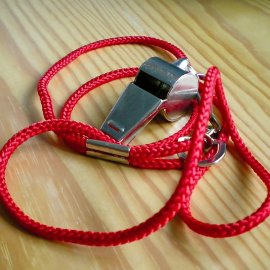Blog
Electronic payment order
The proposal for the introduction of electronic payment order, which was approved by the Government last year, has now taken its legal form. Thus, from 1 July 2008, creditors will be able to lodge court applications for a payment order in electronic form. Similar to other steps in the process of introducing e-justice, this instrument is aimed to save time, administrative load and costs.
A creditor who wishes to collect his receivable can now complete an electronic form available on the website of the Ministry of Justice, sign it using his authorised electronic signature and send it to the competent court. The form will ensure that the applicant furnishes all substantial data and will provide information on the documents to be submitted. If the form is properly completed and the creditor pays the court fee, the judge will confirm it with his electronic signature and the payment order will be sent to the creditor.
The further procedure is identical as for the usual payment order. The defendant may lodge a protest within 15 days of receipt of the electronic payment order, in which case the court will annul the electronic payment order.
Payment order in paper form will continue to exist in addition to electronic payment order; however, creditors will be financially motivated to use the electronic form – the court fees will be only half of those for an order in paper form.
More articles:

Navigating Crisis Situations in Tourism: How to Handle Them?
contact usThe Association of Travel Agencies in the Czech Republic ("ACK") has crafted a brochure addressing the resolution of crisis situations in tourism. These scenarios encompass incidents such as injuries or fatalities, significant pr...
Stewarts
'No one has done as much for me as you,' Eva said.
Stewarts
"A visit to her daughter in London turned Eva's life upside down when she says she stepped into a crossing on a green light but was hit by a car. Despite her remarkable bravery, she faced a long treatment due to fractures in her pelvis, and the associated limitations and pain are likely to persist for the rest of her life. Regular headaches and impaired concentration compound her challenges.
Eva contacted us through an organization temporarily helping her manage her difficult living situation. At that time, she was destitute, relying only on subsistence payments. We were able to assist her because we specialize in personal injury and have contacts with proven colleagues abroad.
We worked with Stewarts, a UK law firm, on this case. Attorneys Klára Dvořáková and Rebecca Huxford helped Eva with the documentation in her case, explaining her options and the differences between the Czech and British systems of healthcare and social benefits reimbursement. Within a few months, thanks to the professional cooperation between the two offices, an offer of compensation from the insurance company of approximately CZK seven million was achieved. The client accepted this settlement because she did not want to deal with courts in the United Kingdom.
Subsequently, we assisted the client with related tax issues and contacted Auditone, a tax consultancy firm, which arranged for the filing of a tax return. Compensation for lost income is taxable, unlike most personal injury compensation.
'No one has done as much for me as you,' Eva said.
The fact that we were able to help Eva gives our work meaning and brings us great joy. We are very happy that, thanks to our many years of active involvement in the international professional organization PEOPIL, we can cooperate on such cases."
Livingstone, Tour Operator
Thank you again for your valuable advice. I breathe better when I know who to turn to.
Livingstone, Tour Operator
"Thank you again for your valuable advice. I breathe better when I know who to turn to."
Anders Thorsen Advokatanpartsselskab
It has been an absolute pleasure to work with you.
Anders Thorsen Advokatanpartsselskab
"It has been an absolute pleasure to work with you and your colleagues. Your advice and way of handling the matter and our communication has been of the highest quality and we are very happy with the outcome.
If any of my clients need assistance in matters in the Czech Republic in the future, I know who to recommend."




